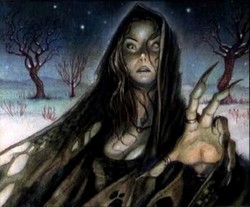quinta-feira, 3 de julho de 2014
5 weird things that happen after you die
1. Your cells burst open. The process in which the human body decomposes starts just minutes after death. When the heart stops beating, we experience algor mortis, or the “death chill,” when the temperature of the body falls about 1.5 degrees Fahrenheit an hour until it reaches room temperature. Almost immediately, the blood becomes more acidic as carbon dioxide builds up. This causes cells to split open, emptying enzymes into the tissues, which start to digest themselves from within.
2. You turn white and purple. Gravity makes its mark on the human body in the first moments after death. While the rest of your body turns deathly pale, heavy red blood cells move to the parts of your body that are closest to the ground. This is because circulation has stopped. The results are purple splotches over your lower parts known as livor mortis. In fact, it is by studying the markings of livor mortis that the coroner can tell exactly what time you died.
3. Calcium makes your muscles contract. We’ve all heard of rigor mortis, in which a dead body becomes stiff and hard to move. Rigor mortis generally sets in about three to four hours after death, peaks at 12 hours, and dissipates after 48 hours. Why does it happen? There are pumps in the membranes of our muscle cells that regulate calcium. When the pumps stop working in death, calcium floods the cells, causing the muscles to contract and stiffen. Thus, there is rigor mortis.
4. Your organs will digest themselves. Putrefaction, or when our bodies start to look like extras in a zombie movie, follows rigor mortis. This phase is delayed by the embalming process, but eventually the body will succumb. Enzymes in the pancreas make the organ begin to digest itself. Microbes will tag-team these enzymes, turning the body green from the belly onwards. As Caroline Williams writes in NewScientist, “the main beneficiaries are among the 100 trillion bacteria that have spent their lives living in harmony with us in our guts.” As this bacterium breaks us down, it releases putrescine and cadaverine, which are the compounds which make the human body smell in death.
5. You may be covered in a wax. After putrefaction, decay moves quickly to turn the body into a skeleton. However, some bodies take an interesting turn on the way. If a body comes into contact with cold soil or water, it may develop adipocere, a fatty, waxy material formed from the bacteria breaking down tissue. Adipocere works as a natural preservative on the inner organs. It can mislead investigators into thinking a body died much sooner than it actually did, as was the case of a 300-year-old adipocere corpse recently found in Switzerland.
Subscrever:
Enviar feedback (Atom)



























.jpg)








































Sem comentários:
Enviar um comentário